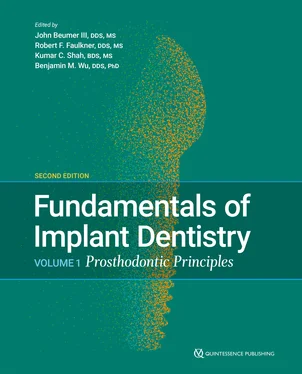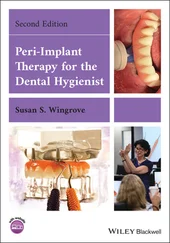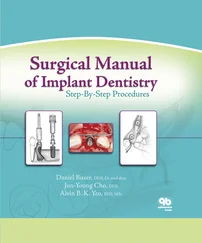14.Koh LB, Rodriguez I, Venkatraman SS. The effect of topography of polymer surfaces on platelet adhesion. Biomaterials 2010;31:1533–1545.
15.Milleret V, Tugulu S, Schlottig F, Hall H. Alkali treatment of microrough titanium surfaces affects macrophage/monocyte adhesion, platelet activation and architecture of blood clot formation. Eur Cell Mater 2011;21:430–444.
16.Hong J, Kurt S, Thor A. A hydrophilic dental implant surface exhibits thrombogenic properties in vitro. Clin Implant Dent Relat Res 2013;15:105–112.
17.Kilpadi KL, Chang PL, Bellis SL. Hydroxylapatite binds more serum proteins, purified integrins, and osteoblast precursor cells than titanium or steel. J Biomed Mater Res 2001;57:258–267.
18.Nishimura I, Huang Y, Butz F, Ogawa T, Lin A, Wang CJ. Discrete deposition of hydroxyapatite nanoparticles on a titanium implant with predisposing substrate microtopography accelerated osseointegration. Nanotechnology 2007;18:245101.
19.Kuwabara A, Hori N, Sawada T, Hoshi N, Watazu A, Kimoto K. Enhanced biological responses of a hydroxyapatite/TiO 2hybrid structure when surface electric charge is controlled using radiofrequency sputtering. Dent Mater J 2012;31:368–376.
20.Lee SH, Kim HW, Lee EJ, Li LH, Kim HE. Hydroxyapatite-TiO 2hybrid coating on Ti implants. J Biomater Appl 2006;20:195–208.
21.Boyd AR, Burke GA, Duffy H, Cairns ML, O’Hare P, Meenan BJ. Characterisation of calcium phosphate/titanium dioxide hybrid coatings. J Mater Sci Mater Med 2008;19:485–498.
22.Jimbo R, Sotres J, Johansson C, Breding K, Currie F, Wennerberg A. The biological response to three different nanostructures applied on smooth implant surfaces. Clin Oral Implants Res 2012;23:706–712.
23.Steinberg AD, Willey R. Scanning electron microscopy observations of initial clot formation on treated root surfaces. J Periodontol 1988;59:403–411.
24.Sica A, Mantovani A. Macrophage plasticity and polarization: In vivo veritas. J Clin Invest 2012;122:787–795.
25.Omar O, Lennerås M, Svensson S, et al. Integrin and chemokine receptor gene expression in implant-adherent cells during early osseo- integration. J Mater Sci Mater Med 2010;21:969–980.
26.Nagaraj S, Youn JI, Gabrilovich DI. Reciprocal relationship between myeloid-derived suppressor cells and T cells. J Immunol 2013;191:17–23.
27.Jimbo R, Sawase T, Shibata Y, et al. Enhanced osseointegration by the chemotactic activity of plasma fibronectin for cellular fibronectin positive cells. Biomaterials 2007;28:3469–3477.
28.Davies JE. Understanding peri-implant endosseous healing. J Dent Educ 2003;67:932–949.
29.Butz F, Aita H, Wang CJ, Ogawa T. Harder and stiffer bone osseointegrated to roughened titanium. J Dent Res 2006;85:560–565.
30.Jimbo R, Coelho PG, Bryington M, et al. Nano hydroxyapatite-coated implants improve bone nanomechanical properties. J Dent Res 2012;91:1172–1177.
31.Schaffler MB, Burr DB. Stiffness of compact bone: Effects of porosity and density. J Biomech 1988;21:13–16.
32.Willems NMBK, Mulder L, den Toonder JMJ, Zentner A, Langenbach GEJ. The correlation between mineralization degree and bone tissue stiffness in the porcine mandibular condyle. J Bone Miner Metab 2014;32:29–37.
33.Cabral WA, Chang W, Barnes AM, et al. Prolyl 3-hydroxylase 1 deficiency causes a recessive metabolic bone disorder resembling lethal/severe osteogenesis imperfecta. Nat Genet 2007;39:359–365.
34.Barnes AM, Chang W, Morello R, et al. Deficiency of cartilage- associated protein in recessive lethal osteogenesis imperfecta. N Engl J Med 2006;355:2757–2764.
35.Li Y, Thula TT, Jee S, et al. Biomimetic mineralization of woven bone-like nanocomposites: Role of collagen cross-links. Biomacromolecules 2012;13:49–59.
36.Wall I, Donos N, Carlqvist K, Jones F, Brett P. Modified titanium surfaces promote accelerated osteogenic differentiation of mesenchymal stromal cells in vitro. Bone 2009;45:17–26.
37.Takeuchi K, Saruwatari L, Nakamura HK, Yang JM, Ogawa T. Enhanced intrinsic biomechanical properties of osteoblastic mineralized tissue on roughened titanium surface. J Biomed Mater Res A 2005;72:296–305.
38.Bernhardt R, Kuhlisch E, Schulz MC, Eckelt U, Stadlinger B. Comparison of bone-implant contact and bone-implant volume between 2D-histological sections and 3D-SRµCT slices. Eur Cell Mater 2012;23:237–247.
39.Butz F, Ogawa T, Chang TL, Nishimura I. Three-dimensional bone- implant integration profiling using micro-computed tomography. Int J Oral Maxillofac Implants 2006;21:687–695.
40.Butz F, Ogawa T, Nishimura I. Interfacial shear strength of endosseous implants. Int J Oral Maxillofac Implants 2011;26:746–751.
41.Linder L. Ultrastructure of the bone-cement and the bone-metal interface. Clin Orthop Relat Res 1992;(276):147–156.
42.Sennerby L, Ericson LE, Thomsen P, Lekholm U, Astrand P. Structure of the bone-titanium interface in retrieved clinical oral implants. Clin Oral Implants Res 1991;2:103–111.
43.Davies JE. In vitro modeling of the bone/implant interface. Anat Rec 1996;245:426–445.
44.Saruwatari L, Aita H, Butz F, et al. Osteoblasts generate harder, stiffer, and more delamination-resistant mineralized tissue on titanium than on polystyrene, associated with distinct tissue micro- and ultrastructure. J Bone Miner Res 2005;20:2002–2016.
45.Albrektsson T, Brånemark PI, Hansson HA, et al. The interface zone of inorganic implants in vivo: Titanium implants in bone. Ann Biomed Eng 1983;11:1–27.
46.Klinger MM, Rahemtulla F, Prince CW, Lucas LC, Lemons JE. Proteoglycans at the bone-implant interface. Crit Rev Oral Biol Med 1998;9:449–463.
47.Palmquist A, Omar OM, Esposito M, Lausmaa J, Thomsen P. Titanium oral implants: Surface characteristics, interface biology and clinical outcome. J R Soc Interface 2010;7(suppl 5):S515–S527.
48.Nakamura H, Shim J, Butz F, Aita H, Gupta V, Ogawa T. Glycosaminoglycan degradation reduces mineralized tissue-titanium interfacial strength. J Biomed Mater Res A 2006;77:478–486.
49.Puleo DA, Nanci A. Understanding and controlling the bone-implant interface. Biomaterials 1999;20:2311–2321.
50.Rittling SR, Matsumoto HN, McKee MD, et al. Mice lacking osteopontin show normal development and bone structure but display altered osteoclast formation in vitro. J Bone Miner Res 1998;13:1101–1111.
51.Thurner PJ, Chen CG, Ionova-Martin S, et al. Osteopontin deficiency increases bone fragility but preserves bone mass. Bone 2010;46:1564–1573.
52.Gao J. Immunolocalization of types I, II, and X collagen in the tibial insertion sites of the medial meniscus. Knee Surg Sports Traumatol Arthrosc 2000;8:61–65.
53.Fukuta S, Oyama M, Kavalkovich K, Fu FH, Niyibizi C. Identification of types II, IX and X collagens at the insertion site of the bovine achilles tendon. Matrix Biol 1998;17:65–73.
54.Gibson G, Lin DL, Francki K, Caterson B, Foster B. Type X collagen is colocalized with a proteoglycan epitope to form distinct morphological structures in bovine growth cartilage. Bone 1996;19:307–315.
55.Mengatto CM, Mussano F, Honda Y, Colwell CS, Nishimura I. Circadian rhythm and cartilage extracellular matrix genes in osseointegration: A genome-wide screening of implant failure by vitamin D deficiency. PLoS One 2011;6:e15848.
56.Kojima N, Ozawa S, Miyata Y, Hasegawa H, Tanaka Y, Ogawa T. High-throughput gene expression analysis in bone healing around titanium implants by DNA microarray. Clin Oral Implants Res 2008;19:173–181.
57.Thalji G, Gretzer C, Cooper LF. Comparative molecular assessment of early osseointegration in implant-adherent cells. Bone 2013;52:444–453.
58.Ivanovki S, Hamlet S, Salvi GE, et al. Transcriptional profiling of osseo- integration in humans. Clin Oral Implants Res 2011;22:373–381.
59.Nishimura I. Genetic networks in osseointegration. J Dent Res 2013;92(12 suppl):109S–118S.
Читать дальше












